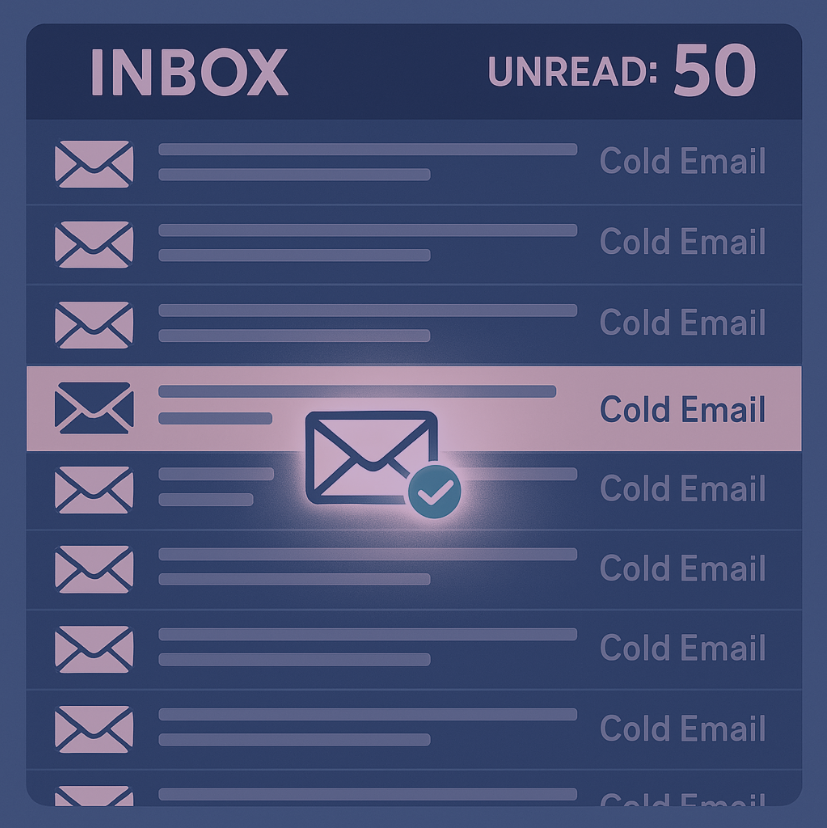Cold Email Frameworks That Landed Fortune 500 Deals
When you're trying to break into companies like HSBC, Binance, or Coca-Cola, cold email templates just won’t cut it. Fortune 500 buyers are inundated daily—and they can smell automation a mile away.
But here’s the good news: cold email still works for enterprise outreach. You just need the right cold email frameworks—ones designed not to sound clever, but to sound credible. At The Playbook Agency, we’ve developed and battle-tested dozens of outbound frameworks for our clients, and we’ve seen firsthand which ones get ignored and which ones open doors.
In this post, we’ll share the high-level structure behind three enterprise-ready cold email frameworks that have helped land meetings with some of the world’s biggest brands—and show you what they all have in common.

Why Cold Email for Enterprise Is a Different Game
Most B2B cold outreach is designed for speed and scale. But selling to enterprise doesn’t reward volume. It rewards relevance.
Senior stakeholders at large companies aren’t impressed by flashy copy or punchy CTAs. They care about risk mitigation, strategic alignment, and proof. That’s why enterprise outreach email frameworks must:
- Show signal-level understanding of the prospect's industry or org
- Establish credibility within the first two sentences
- Offer value without assuming attention
If your outbound playbook treats every prospect the same way, it’s not built for the Fortune 500.

The 3 Principles Behind Enterprise Cold Email Success
1. Relevance Beats Personalization
Anyone can mention a job title or a recent LinkedIn post. Real relevance means identifying strategic context—funding, hiring trends, industry shifts—and using that as your entry point.
2. Proof Over Persuasion
Fortune 500 buyers care about outcomes, not opinions. Share measurable wins or recognisable brand success stories.
3. Controlled CTAs Win
Instead of “Got 15 minutes?”, use permission-based CTAs like: “Should I send the short deck?” or “Open to a quick teardown?”
.png)
Framework 1: The Strategic Trigger
Use when: A relevant event has happened (funding, team growth, product launch).
Structure:
- Reference the shift
- Link it to your value proposition
- Suggest a lightweight next step
Example (teaser):
Noticed your team’s been scaling RevOps over the past 90 days—likely gearing up for a self-serve motion?
We’ve helped a few PLG SaaS brands thread automation into their onboarding model pre-Series C.
Want me to share the before/after breakdown we used at [similar company]?
Framework 2: The Challenger POV
Use when: You want to disrupt legacy thinking or unseat incumbents.
Structure:
- Lead with a bold or contrarian insight
- Back it with proof
- Ask if they’ve seen the same
Example (teaser):
Most enterprise CS teams spend more time updating spreadsheets than talking to customers.
At [brand], we automated 70% of their renewal workflow in 6 weeks.
Curious if you’ve seen anything similar internally?
Framework 3: The Light Touch Referral
Use when: You have a warm intro, shared partner, or common network.
Structure:
- Mention the connection
- Tease a helpful takeaway
- Keep tone relaxed
Example (teaser):
Saw you’re partnered with [platform]—we recently ran a pilot with their ops team on lead routing.
Happy to send a quick snapshot if helpful—just let me know.
What the Best Frameworks Have in Common
The highest-performing frameworks all share a few essential traits. They are concise, usually under 100 words, and avoid filler or fluff. They are contextual, meaning every email is tied to something real and recent—like a funding announcement or an executive hire. The best frameworks are also CTA-smart, giving prospects easy, low-pressure options like "Should I send a quick brief?" instead of hard asks. And finally, they’re proof-backed—establishing trust through real results or recognisable brands instead of vague promises.
These emails don’t try to convert. They try to earn a reply. That shift in intent changes everything.
Building a Scalable Enterprise Cold Email Engine
Frameworks are a great starting point, but what really moves the needle is turning those frameworks into a system. That means crafting messaging tailored to your ICP tiers, not one-size-fits-all sequences. It also means using tools like Clay or Smartlead to handle enrichment and scoring at scale, so every email is relevant before it's even written. It’s not enough to track open rates—you need to measure reply quality, conversion to meeting, and overall pipeline impact. And your messaging logic should align with actual sales triggers—not just generic contact data.
This is the foundation we build into every system under our RevOps & Clay Engineering service.
.png)
Enterprise Attention Isn’t Given—It’s Earned
The right message, at the right time, to the right person still works. The only difference at the Fortune 500 level? You only get one shot.
Use frameworks that are tight, tested, and tailored. If you're ready to turn your best-performing messages into a repeatable, test-and-learn engine, explore our guide on building a feedback-driven cold email playbook. Then measure, tweak, and repeat.
That’s how the biggest brands in the world end up in your CRM.

.jpeg)
.svg)



